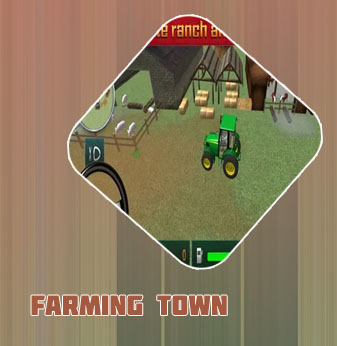Play the farmer
Are you interested in trying your hand at farming simulation games? Whether you're a beginner looking for tips or a seasoned player looking to up your game, these four articles will provide you with valuable insights and strategies to help you succeed in playing the farmer. From optimizing your crop yields to managing your farm efficiently, these articles cover a range of topics to help you become a successful virtual farmer.
7 Tips for Maximizing Crop Yields in Farming Games

Farming games have become increasingly popular among gamers worldwide, offering a virtual experience of managing and growing crops. To maximize crop yields in these games, players can follow a few key tips that will help them succeed in their virtual farming endeavors.
-
Plan your crops strategically: Before planting anything, take the time to plan out which crops you want to grow and where. Consider factors such as soil quality, water availability, and crop profitability to make the most out of your land.
-
Invest in upgrades: In many farming games, players have the option to upgrade their tools, equipment, and buildings. Investing in these upgrades can significantly boost your crop yields and efficiency, allowing you to harvest more produce in less time.
-
Keep an eye on weather conditions: Just like in real life, weather plays a crucial role in crop growth in farming games. Pay attention to weather forecasts and adjust your planting schedule accordingly to ensure optimal conditions for your crops.
-
Use fertilizers and pesticides wisely: Fertilizers can help improve soil fertility and crop growth, while pesticides can protect your crops from pests and diseases. However, it's essential to use these resources wisely to avoid wasting them and maximize their benefits.
-
Take care of your crops: Regularly check on your crops, water
The Ultimate Guide to Farm Management in Simulation Games
Simulation games have become increasingly popular over the years, allowing players to experience the challenges and rewards of managing various aspects of virtual farms. For those looking to master the art of farm management in simulation games, "The Ultimate Guide to Farm Management" is an invaluable resource.
This comprehensive guide covers all aspects of farm management, from crop cultivation to livestock breeding, and everything in between. With detailed tips and strategies, players can learn how to maximize their profits, expand their operations, and overcome obstacles that may arise.
One of the key features of this guide is its focus on efficiency and optimization. By carefully planning out crop rotations, managing resources effectively, and investing in the right equipment, players can ensure that their farm runs smoothly and profitably.
In addition to practical advice, "The Ultimate Guide to Farm Management" also delves into the history of farming simulation games, highlighting the evolution of the genre and the impact it has had on gaming culture. From classic titles like Harvest Moon to modern hits like Stardew Valley, this guide explores the rich history of farm management games and the ways in which they have captured the imaginations of players around the world.
Top Strategies for Making Money in Virtual Farming
Virtual farming has become a popular way for individuals to make money from the comfort of their own homes. With the rise of online farming games and simulations, there are several strategies that can be implemented to maximize profits in this virtual world.
-
Crop Rotation: Just like in real-life farming, crop rotation is essential in virtual farming. By switching up the crops you plant, you can prevent soil depletion and maximize your profits. Different crops have different growth times and selling prices, so be strategic in your choices.
-
Efficient Time Management: Time is money in virtual farming, so it's important to manage your time efficiently. Plan out your tasks carefully, prioritize high-profit activities, and make sure you are always planting and harvesting crops to keep the cash flowing.
-
Invest in Upgrades: To increase your farm's productivity and profitability, consider investing in upgrades such as better tools, machinery, or livestock. These investments may require an initial outlay of virtual currency, but they will pay off in the long run by increasing your output and efficiency.
-
Diversify Your Income Streams: Don't rely solely on crop sales to make money in virtual farming. Consider diversifying your income streams by selling livestock products, participating in virtual farmers' markets, or even offering farm tours to
How to Choose the Best Crops for Your Farm in Simulation Games
Today we have with us an expert in simulation games, John Smith, to talk about how to choose the best crops for your farm in these virtual worlds.
John, could you please share some tips on selecting the right crops for a farm in simulation games?
John: Of course! One important factor to consider is the climate of the virtual world. Just like in real life, different crops thrive in different conditions. For example, if you're playing a game set in a tropical environment, you might want to focus on crops like bananas, pineapples, or coconuts. On the other hand, if the game is set in a colder climate, crops like wheat, potatoes, or cabbage might be a better choice.
What about the profitability of the crops?
John: Profitability is definitely a key consideration. Some crops may have higher upfront costs but can yield greater profits in the long run. It's important to balance the initial investment with the potential returns to maximize your virtual farm's income.
Thank you, John, for those valuable insights on choosing crops for a virtual farm. It's clear that considering factors like climate and profitability can help players make the most out of their farming experience in simulation games.